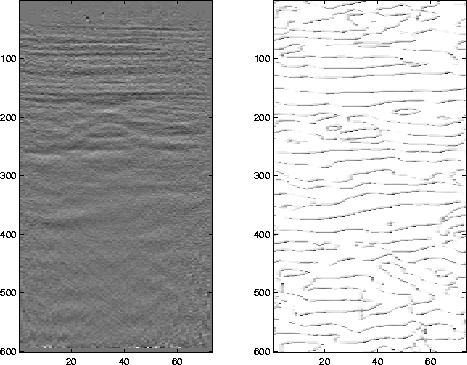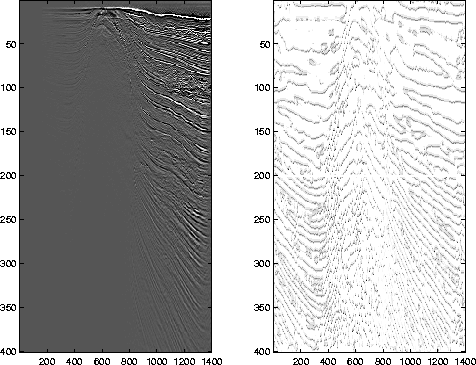 |
Figure 8 The original image and the boundaries found by image disparity with itself.
 |
Figure ![[*]](http://sepwww.stanford.edu/latex2html/cross_ref_motif.gif) shows the
boundaries that have been detected using this algorithm for the first Duri
image in figure
shows the
boundaries that have been detected using this algorithm for the first Duri
image in figure ![[*]](http://sepwww.stanford.edu/latex2html/cross_ref_motif.gif) . This method was also tested on a more complicated migrated data set
that contains steeply dipping reflectors, from
Tang and Clapp (2006). The result is shown in figure
. This method was also tested on a more complicated migrated data set
that contains steeply dipping reflectors, from
Tang and Clapp (2006). The result is shown in figure ![[*]](http://sepwww.stanford.edu/latex2html/cross_ref_motif.gif) .
.
 |
It is encouraging even though this method fails to distinguish all of the layer boundaries that are clearly seen at the top of the original image. Although not demonstrated here, it is possible to shift only in the x-direction to highlight the vertical edges or shift in the y-direction to accentuate the horizontal edges. The sum of these two shifts will yield the same result as a single diagonal shift as done for these examples.